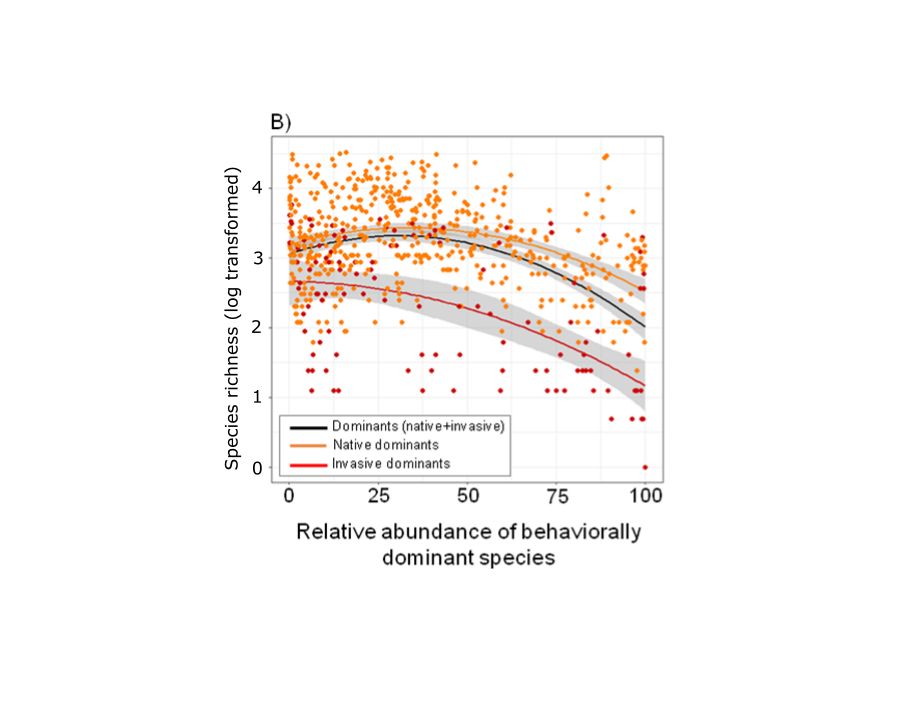7 August 2018 | By Tom Bishop
A recent study by a team of international researchers, including former C·I·B post-doctoral associate, Tom Bishop, has shown that invasive dominant ant species have different effects on the diversity of the wider ant community than native dominant species.
It has long been recognised that a subset of ant species can be classed as “behaviourally dominant”. These dominant species exert a strong influence on other ants through their highly aggressive and territorial behaviour. Understanding the impact that these species have on the rest of the ant community is central to understand how ant biodiversity is shaped and maintained across the globe.
As a result, a research theme in ant ecology has been the dominance-diversity relationship. This describes the relationship between the number of ant species found in an area and the presence or abundance of dominant species. Often, this relationship appears as a hump shape: species richness is high at intermediate levels of dominant ant abundance. Typically, it is assumed that this effect is caused by dominant ants competitively excluding other, non-dominant ant species.
Using a global dataset of over 1,000 local communities, Tom and colleagues tested whether the dominance-diversity rule held across a wide range of habitats and conditions.
The researchers found the classic dominance-diversity hump shaped relationship. This was not the case, however, in sites that had invasive dominant species. When invasive ants were present, increases in the abundance of dominant ants nearly always led to a decline in species richness. Indeed, species richness in uninvaded communities was consistently higher than in invaded communities.

This study is correlative in nature but shows the global impact that invasive ant species can have on natural communities. The researchers conclude that there is in fact a diversity of dominance-diversity relationships! There appears to be one rule for natural systems and another for invaded ones.
The paper can be found in Global Change Biology
Arnan, X., Andersen, A.N., Gibb, H., Parr, C.L., Sanders, N.J., Dunn, R.R., Angulo, E., Baccaro, F.B., Bishop, T.R., Boulay, R., Castracani, C., Del Toro, I., Delsinne, T., Donoso, D.A., Elten, E.K., Enriquez, M.L., Fayle, T.M., Fitzpatrick, M.C., Gómez, C., Gove, A., Groc, S., Grossman, B.F., Guenard, B., Gunawardene, N., Heterick, B., Hoffmann, B., Janda, M., Jenkins, C., Klimes, P., Lach, L., Laeger, T., Leponce, M., Lucky, A., Menke, S., Mezger, D., Moses, J., Munyai, T.C., Paknia, O., Pearce-Duvet, J., Pfeiffer, M., Philpott, S.M., Souza, J., Tista, M., Vasconcelos, H.L. & Retana, J. Dominance‐diversity relationships in ant communities differ with invasion. Global Change Biology, in press: https://onlinelibrary.wiley.com/doi/abs/10.1111/gcb.14331
For more information, contact Tom Bishop at thomasrhys.bishop@gmail.com



